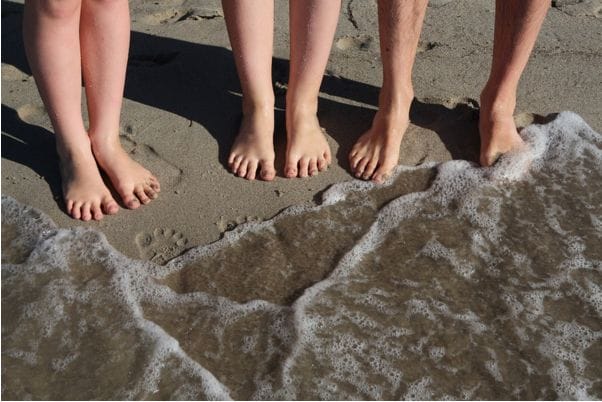Winter is approaching, and for travel trailer owners, that means it’s time to start thinking about how to keep their investment safe from the cold. Without proper preparation, freezing temperatures can cause significant damage to the plumbing, exterior, and appliances of a trailer. To winterize a travel trailer, owners must focus on draining water systems, sealing openings, and protecting the exterior surfaces.

Proper winterization not only prevents damage but also prolongs the life of the travel trailer. By addressing the plumbing, sealing all gaps, and checking the electrical systems, owners can avoid costly repairs and ensure their trailer is ready for the spring. It’s essential to follow a step-by-step process to ensure no area is overlooked.
With the right knowledge and tools, winterizing a travel trailer can be straightforward. Knowing which steps to take and when to take them transforms this task into an easy routine rather than a daunting chore. Readers looking to master these skills and ensure their trailer’s longevity will find this guide helpful.
Key Takeaways
- Drain and protect plumbing systems.
- Seal and cover exterior areas.
- Inspect and secure electrical systems.
Preparing Your Travel Trailer’s Plumbing for Winter
Winterizing a travel trailer’s plumbing involves several key tasks to prevent freezing and damage. These tasks include draining the water systems, applying non-toxic antifreeze, and securing the water heater and tanks.
Draining Water Systems
To start, drain all water from the travel trailer’s plumbing system. Begin with the fresh water tank by opening the low point drains beneath the trailer. This step ensures that water doesn’t stay inside and leads to possible freezing and cracking.
Next, activate the water pump to remove any remaining water within the lines, taking care to leave faucets open. It’s crucial to open all hot and cold faucets during this process, as well as the shower and toilet to release trapped water.
Don’t forget to empty the holding tanks. Drain both the gray and black water tanks thoroughly to prevent buildup. At this stage, the water heater should also be drained, but ensure it’s turned off, and the system is cool. For safety, relieve pressure by releasing the valve at the top before removing the drain plug.
Applying Non-Toxic Antifreeze
Use non-toxic RV antifreeze to protect the plumbing. A water heater bypass kit is recommended for this step to avoid filling the water heater with antifreeze. If not already installed, one can be fitted relatively easily.
Start by connecting a hose to the water pump that draws in the RV antifreeze. Make sure the water heater is bypassed, so antifreeze doesn’t enter it. Pump the antifreeze into the system by turning on the pump and opening faucets one by one.
Run the antifreeze until it flows out in a consistent pink color from each fixture, indicating the lines are full. Remember to also flush the toilet until the pink fluid appears there, ensuring complete protection.
Securing Water Heater and Tanks
Securing the water heater and tanks is critical for winter preparation. With the water heater bypassed, ensure it remains empty throughout the season. Double-check that it is off and drained, with all valves properly closed or set to bypass.
Seal the holding tanks by adding a little non-toxic RV antifreeze into each one. This simple addition helps protect against the minimal water remaining in the traps and prevents freezing.
Finally, close all faucets tightly and re-check all drained and secured points in the trailer’s plumbing system. This final review helps ensure the system’s safety through the cold months.
Protecting Your Travel Trailer’s Exterior

Shielding your travel trailer from harsh winter conditions is crucial. This involves using the right covers, maintaining the tires, and ensuring all seals are intact. Proper protection will help prevent damage and extend the lifespan of your trailer.
Covering and Shielding the Trailer
Using RV covers is an effective way to protect the trailer’s exterior. These covers shield it from snow, rain, and debris. Investing in a breathable cover is important as it prevents moisture buildup, which could lead to mold and mildew.
Additionally, employing tire covers can prevent cracks and flat spots. Tire covers protect against UV rays and cold weather, both of which can cause deterioration. Ensuring the covers fit properly is key to providing the best protection. Consider the trailer’s size when selecting covers to ensure full coverage.
Maintaining Tires and Seals
Tires require special attention to endure the winter. One should check the tire pressure before any long storage. Tires tend to lose pressure over time, especially in cold temperatures.
Inspect and clean all seals around windows, doors, and vents. Apply a sealant if any cracks or wear are found, as this prevents water from seeping in. Carefully check the roof edges and seams, as these areas are prone to leaks. Regular maintenance of tires and seals helps to avoid potential damage during winter months.
Electrical and Appliance Considerations

Proper winterization of a travel trailer includes taking care of the electrical systems and appliances. This ensures that everything functions well when the trailer is in use again. Key points involve maintaining battery health and protecting appliances from damage due to freezing temperatures.
Battery Care and Storage
Taking care of RV batteries is essential during the winter months. Start by fully charging the batteries to prevent freezing. Once charged, they should be disconnected to prevent any drain. It’s crucial to store them in a cool, dry place if possible, as extreme temperatures can impact their lifespan.
Battery terminals should be cleaned and coated with a protective spray to avoid corrosion. Regular checks of battery charge levels during storage will help in maintaining their condition. For long-term storage, consider using a trickle charger to maintain the battery without overcharging it.
Appliance Preservation Methods
Proper steps are necessary to ensure appliances are protected from winter damage. Begin by unplugging all appliances to prevent electrical fires and reduce power drain. Any water lines connected to these appliances need to be emptied to avoid freezing and subsequent damage.
Refrigerators and freezers should be cleaned out thoroughly. It’s a good idea to sterilize them with a baking soda solution to prevent mold growth. Leaving appliance doors slightly open helps with airflow, preventing odors.
Stovetops and ovens need to be cleaned and inspected for any gas leaks if applicable. RV maintenance includes checking seals and connections for each appliance, ensuring they’re secure and ready for next season. Regular RV winterizing checks ensure that all appliances remain in good working order.
Frequently Asked Questions
Winterizing a travel trailer involves several important steps to ensure protection against cold weather. This includes managing the plumbing system, using antifreeze, and adjusting for living conditions.
What are the essential steps to winterize a travel trailer?
Winterizing involves draining all water systems, including tanks and pipes, to prevent freezing. Cleaning the interior and exterior and sealing openings are also crucial. These steps help protect the trailer from cold damage.
Is it necessary to use antifreeze when winterizing a travel trailer, and what are the alternatives?
Antifreeze is commonly used to prevent water from freezing in the pipes. Some alternatives include blowing out the water lines with compressed air. Each method ensures the plumbing system stays intact during winter. Using antifreeze is generally more reliable.
How does living in an RV affect the winterization process?
Living full-time in an RV during winter requires more frequent checks. Heating and insulation become critical to maintaining comfort and preventing freeze damage. Additional measures might be needed to ensure safety and warmth when living in cold conditions.
What is the procedure for winterizing a camper’s plumbing system with compressed air?
First, drain all tanks, including the freshwater, gray, and black water tanks. Connect an air compressor to the water system using an adapter. Set the air pressure to a safe level, typically around 30-40 psi, and blow out the pipes to clear any remaining water.
Can you explain how to calculate the amount of antifreeze required for winterizing a travel trailer?
The amount of antifreeze needed depends on the size of the travel trailer and its plumbing complexity. Generally, around 2 to 3 gallons are sufficient for most trailers. Consider the number of faucets, toilets, and other water outlets when determining the exact amount needed.
What is the proper way to protect the RV’s toilet system during the winterizing process?
To protect the toilet system, start by draining and flushing the black water tank thoroughly. Pour a sufficient amount of RV antifreeze into the toilet and flush it a few times to ensure the antifreeze reaches the tank and pipes, providing a protective layer against freezing.




